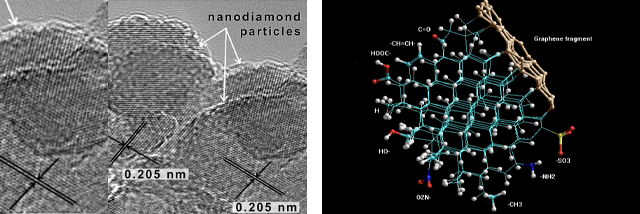
Specialist Cancer Treatment
Our nanotechnology can be tuned to attach to a specific region anywhere in the body, & essentially tailored to detect any disease such as clots and tumours that may traditionally be missed by ultra sound, CT, angiography, and MRI that do not always report specific molecular/cellular compositions of a lesion.
Development of Fluorescent Nano-Diamond Particles (FNDP-(NV)) for NIR based LFA diagnostics and In vivo imaging of vascular pathology
A Nano-diamond is forever. At least, in terms of fluorescence signal, they are. Fluorescent nano-diamonds never photo-bleach or blink.
Our nano-diamonds are differentiated by coatings that stabilize the particles to withstand a range of conditions. Rather than having the typical unreactive surface, they can be tightly bound to any targeting agent (e.g. aptamers, antibodies, polymers) and can therefore be tailored to detect specific diseases.
These nano-diamonds derive their fluorescence properties from negatively charged nitrogen-vacancy (NV¯) centres, a colour centre or defect in the diamond lattice consisting of a substitutional nitrogen and a neighbouring lattice vacancy. They are fluorescent sources with remarkable optical properties including:
Our nano-diamonds are differentiated by coatings that stabilize the particles to withstand a range of conditions. Rather than having the typical unreactive surface, they can be tightly bound to any targeting agent (e.g. aptamers, antibodies, polymers) and can therefore be tailored to detect specific diseases.
These nano-diamonds derive their fluorescence properties from negatively charged nitrogen-vacancy (NV¯) centres, a colour centre or defect in the diamond lattice consisting of a substitutional nitrogen and a neighbouring lattice vacancy. They are fluorescent sources with remarkable optical properties including:
Fluorescent Nanodiamond Particles

- quantum efficiency near unity
- indefinite photo-stability (no photo-bleaching or blinking)
- broad excitation spectra
- exquisitely sensitive magnetic field modulation of fluorescence emission
- long fluorescence lifetimes (~17ns)









